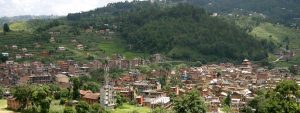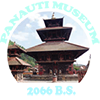Panauti is a typical Newari town situated 32km. South-East of the capital Kathmandu valley, in Kavrepalanchowk district, Province 3. An excellent road links to the capital in less than one hour by car. It can be reached by regular bus services in two hours.

Historically and archaeologically PANAUTI is itself, a remarkable open museum with many important buildings and works of Art worthy of international attention.
Extensive research and conservation works have been conducted and many artifacts of merit found during archaeological digs. Many are now kept in the PANAUTI MUSEUM which is located within the Indreshwor Temple Compound.
PANAUTI is situated at the confluence of the two rivers, ROSI and PUNYAMATA and has been regarded as an important religious site since ancient times. It is believed that there is a third river, RUDHRAWATI, also converging in PANAUTI creating a TRIVENI, tri-junction, in the shape of Lord Shiva’s Trident, making the location even more holy and sacred. However this third river can only be seen by the sheers and the intellectuals. The rivers junction is also regarded as UTTAR PRAYAGTIRTHA, SACHITIRTHA of Nepal.
A great number of devotees from all Nepal but also India gather there for holy ablutions and to pay homage to the INDRESHWOR MAHADEV temple and to the other nearby holy sites.
PANAUTI and its outstandingly rich cultural heritage is in the process of being classified as a WORLD HERITAGE SITE by UNESCO and is already been declared a “Protected Monument Zone” under the Ancient Monument Preservation Act of 1956. The special attention for the conservation and management of the site is the joint responsibility of PANAUTI Municipality and the Department of Archeology of Nepal.
A SHORT HISTORY
The recorded History of PANAUTI dates back to at least the Great LICHCHHAVI rulers of Nepal (2nd to 8th Centuries of the Christian era) but PANAUTI would have already been a well developed and thriving settlement before that period along with other nearby centres like BANEPA, KHOPASI, NALA and SANGA.
Like in these centres, PANAUTI has outstanding ancient stone carvings with the distinct artistic traits from the LICHCHHAVI period.
During the 13 th and 14th Centuries PANAUTI was under the rule of the MALLA and the DEVA dynasties from the KATHMANDU valley. In 1355 AD JAYASING RAM VARDHANA, a powerful feudal lord of PANAUTI and BANEPA, declared himself the sovereign ruler of the region until shortly after his death in 1400 AD when the region went back to the MALLAs.
As mentioned in the oldest chronicle GOPALRAJVANSAVALI, the sons of the MALLA King YAKSHA divided the kingdom amongst themselves. King RAMA MALLA ruled PANAUITI and BANEPA until his death. Without a heir apparent the two cities came under the control of BHAKTAPUR.
From the very beginning PANAUTI was an important commercial town and was also famous for its production of metal utensils.
In medieval times it already had trade links with TIBET in the North, MAKAWANPUR in the South, LALITPUR of NEPAL Valley in the West and with many villages including DOLAKHA in the East.
This strategic situation was coveted by the Kings of both BHAKTAPUR and KANTIPUR who did their best to control the region until the unification of NEPAL in 18th Century by KING PRITHVINARAYAN SHAH.
Today the small market town has lost most of its commercial importance but still services the neighbouring villages.
PEOPLE AND RELIGION
NEWARS are the predominant members of the community of PANAUTI and are living harmoniously with other ethnic groups such as the CHHETRIS, BRAHMINS, TAMANGS and SANYASIS.
Most of the people are dependent on agriculture but few are engaged in other professions.
The population is either HINDU or BUDDHIST but many have followed TANTRISM since ancient time.
The SANYASIS serve as priests in the INDRESWOR MAHADEV Temple whilst the KARMACHARYAS from the NEWAR ethnic community have their duties in the other shrines and temples.
THE CULTURAL HERITAGE OF PANAUTI
It is said that the city of PANAUTI is built on a vast single rock which protects it from the devastating effects of earthquakes and that it remained pretty much unaffected by the violent quake of 1934, to compare to the rest of the country.
Mythology gives credit to the Serpent King BASUKI for this protection as the entire town is said to be standing on its coiled body.
It is incredible and rare to find such a concentration of important buildings in such a relatively small area such as PANAUTI.
Walking in the old part of the city is like stepping back in time hundreds of years.
Its bricked paved streets, narrow lanes with traditional buildings, its ancient water fountains, its many public resting places, Pagoda-roofed temples, monasteries, stupas and impressive carvings in wood and stone, bare witness to the artistic sensitivity and immense skills of the local community.
The architectural and cultural heritage has mostly managed to survive in its original form and shows grandeur and elegance rarely seen in other historical cities in and around the KATHMANDU VALLEY.
